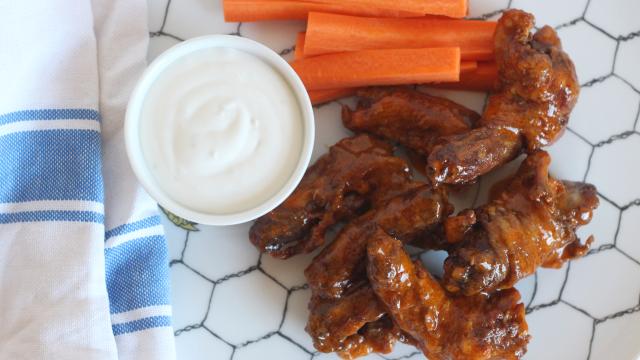When eating an animal, it’s important to eat as much of that animal as possible, and more often that not those “unusual” pieces are some of the most flavorful. This is true of the pig face, and it’s true of the chicken neck.
[referenced url=”https://www.lifehacker.com.au/2018/04/use-chicken-feet-for-the-richest-possible-stock/” thumb=”https://i.kinja-img.com/gawker-media/image/upload/t_ku-large/rleoznbmuqsc7bxwxmz9.jpg” title=”Use Chicken Feet For The Richest Possible Stock” excerpt=”A good chicken stock is more than chicken-flavored water. Though you should aim for your stock to be flavorful, a good one should also be rich and mouth-coating, with a body that just won’t quit. This, my friends, is why you should make your stock with chicken feet.”]
Until recently, I had never given much thought to eating a chicken’s neck. I had eaten a lamb neck, which was fantastic, but those are (obviously) much meatier. But what the chicken neck lacks in meat, it makes up for in connective tissue, fat, and lots of skin for crisping.
They are also incredibly cheap — even the extremely expensive bougie store had them for less than two bucks per pound. Given their composition, chicken necks are only good for a couple of things, but they are very good at those two.
Make silky, sumptuous stock
As we have mentioned before, the more bone, collagen, and connective tissue you have to work with, the better your stock will be. Like feet and wings, necks have all of that stuff in spades—unlike feet, there’s no cleaning required.
Just chuck them in the pot, along with the contents of your freezer scrap bag, aromatics, a teaspoon or two of salt, and maybe a cheese rind if you have it.
Cover everything with water, bring it to a boil, then reduce to a simmer and let it cook for several hours, skimming any scum off the top as it appears. (Alternatively, cook in a pressure cooker for an hour.)
Once your stock is as flavorful as you want it to be, strain it, chill it, and set it in the fridge for the fat to firm up. Scrape off the fat (if you so desire) and use your stock over the next few days, or store indefinitely in the freezer.
Treat them like you would wings
Chicken necks have even less meat than wings, but that meat has a rich, dark, almost gamy flavour, and eating them — corn cob style — is kind of fun. Since they are primarily skin, fat, and connective stuff, I find that a two-step cooking process works best, and sous vide is one of those steps.
Season the necks liberally with salt, then set them in a freezer bag and cook them in a 65C bath for two to four hours. Remove them from the bag, blot dry with paper towels, and decide if you wish to broil or fry. (For extra credit and extra crispy skin, dry them out overnight in the fridge on a wire rack set inside a baking sheet.)
Broiling may seem like the easier option, but keep in mind that — even after a sous-vide session—the fattier necks may still be releasing some grease, and that grease can splatter, and — speaking from terrifying experience — a small fire may appear in your oven for a moment. If you do insist on broiling, cook the necks sous vide for four hours (to drive render as much fat out as possible), and broil on a lower rack, away from the heating coil.
Frying isn’t that hard, anyway. Just heat some oil (enough so it comes up far enough in the pot to cover the necks) in a Dutch oven or cast iron pan to 200C and fry until the skin is crisp and golden brown (around seven to 10 minutes).
Remove from the oil, let drain on paper towels, then toss with your favourite wing sauce. (An equal part of Frank’s and butter, obviously.)

Comments